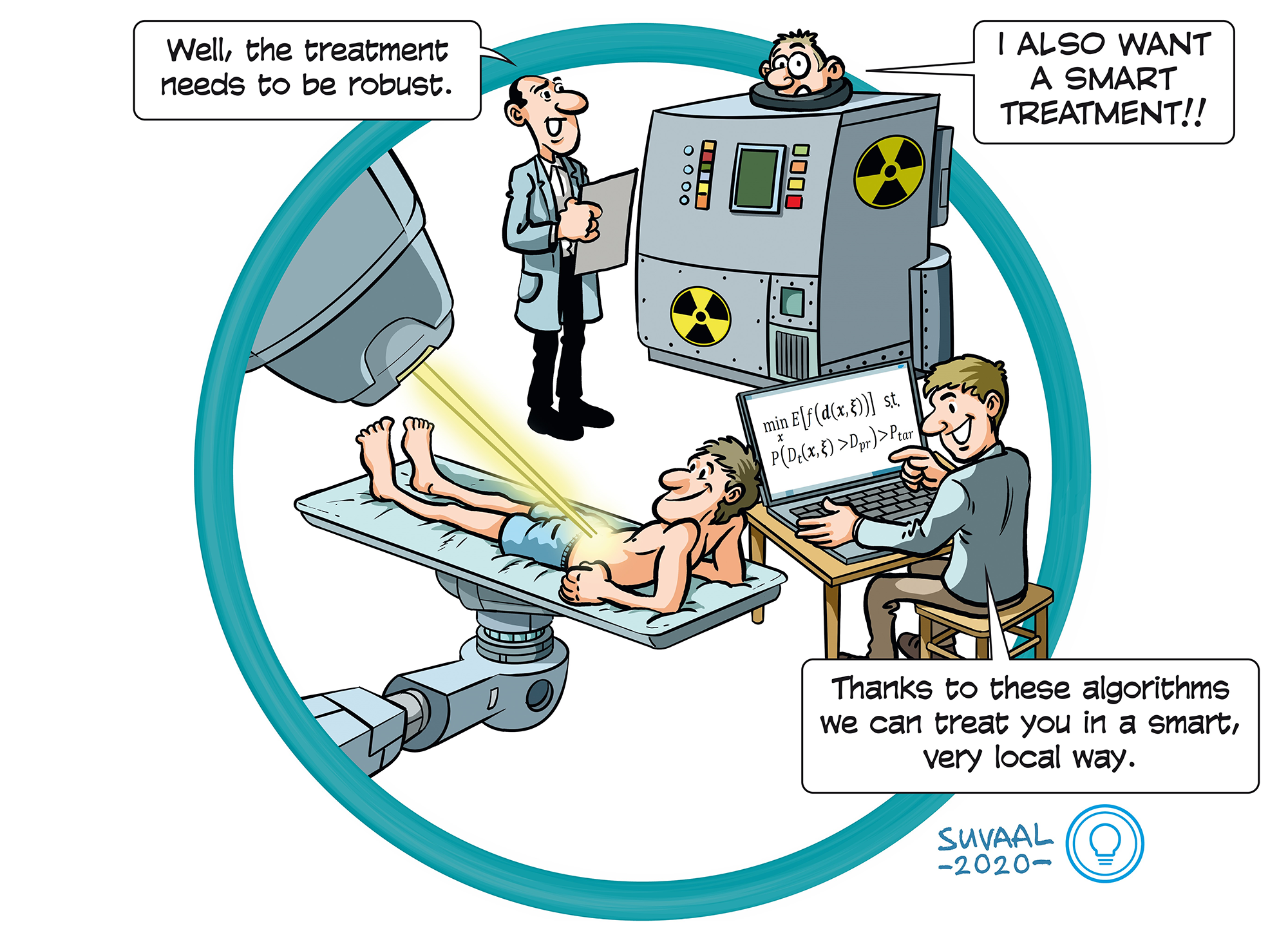Unlocking the potential of computational methods in the fields of nuclear energy and radiation applications
Themes: Life Science & Health, Software Technology & Intelligent Systems


A TRL is a measure to indicate the matureness of a developing technology. When an innovative idea is discovered it is often not directly suitable for application. Usually such novel idea is subjected to further experimentation, testing and prototyping before it can be implemented. The image below shows how to read TRL’s to categorise the innovative ideas.
Summary of the project
The researcher is a computational physicist working in the fields of nuclear energy and radiation applications, such as proton- and radiotherapy. His overarching goal is to improve cancer treatment and oncological care and to enhance the safety of present and future reactors by developing novel modelling tools and numerical methods. Designing generic algorithms that are applicable to a wide range of engineering problems and scientific disciplines in itself is an innovative idea.
The researcher’s main focus is on how to best utilize the vast amounts of available data and how to model the associated uncertainties (arising from e.g., imperfect measurements), such that systems can be optimized for best performance even under uncertain conditions in a computationally feasible manner. To achieve this, he relies on a long list of computational methods, ranging from numerical analysis, through statistics and probability theory, to state-of-the-art physics-aided machine learning techniques.
A specific example of the impact of this research is in radiotherapy and proton therapy, where the goal is to irradiate cancerous tumors in a patient as much as possible, while minimizing the dose in the surrounding healthy tissues. Since uncertainties are unavoidable during treatment (patients breathe, the internal anatomy changes from day to day) and heavily affect how the body absorbs dose, we need to ensure that irradiation plans are sufficiently insensitive to them. The algorithms the researcher has developed enable the fast and accurate evaluation of the effects of such uncertainties, such that treatments can be made robust, safe and effective. Moreover, by using machine learning, the data from a large number of previously treated patients as well as the fundamental laws of physics, the best realistically feasible treatment for a given newly diagnosed patient can be predicted without human interaction, improving plan quality and allowing fast – potentially real-time – adaptation of plans.
What's next?
In radiotherapy specifically, the ultimate goal is to take a more holistic approach towards making radiation treatments as personalised as possible. Thus, we not only want to model the physics of radiation, but also its biological effects, as well as the best use of all available patient data. This requires both a wide range of biological datasets (such as CT, MRI and PET scans, genomic data, blood markers, etc.) as well as the development of sophisticated computational models using them for treatment optimization and decision support.
Dr. Zoltán Perkό
